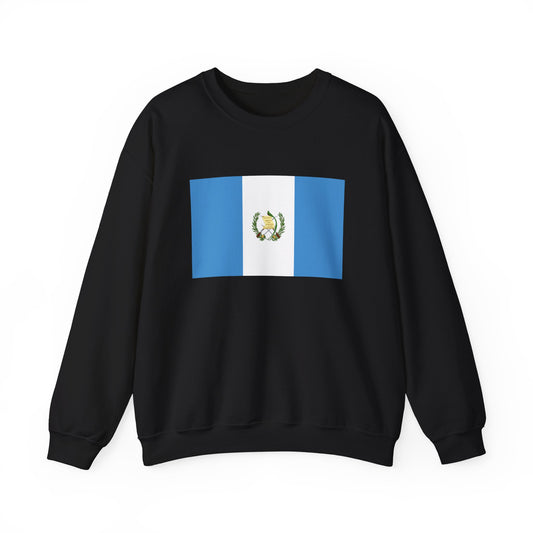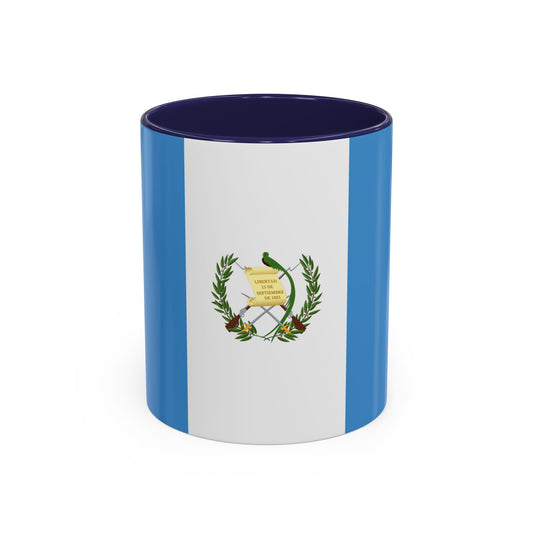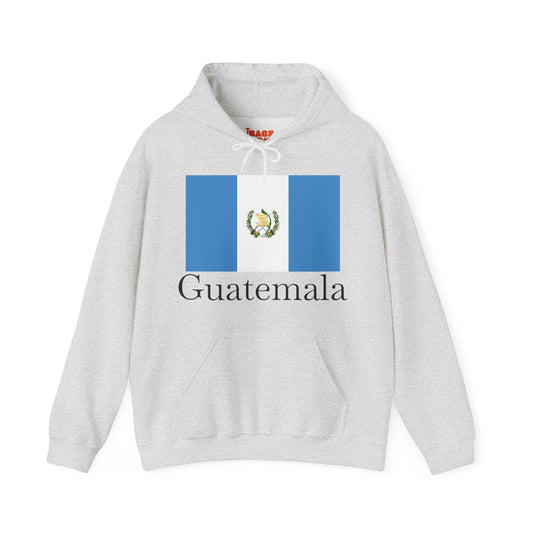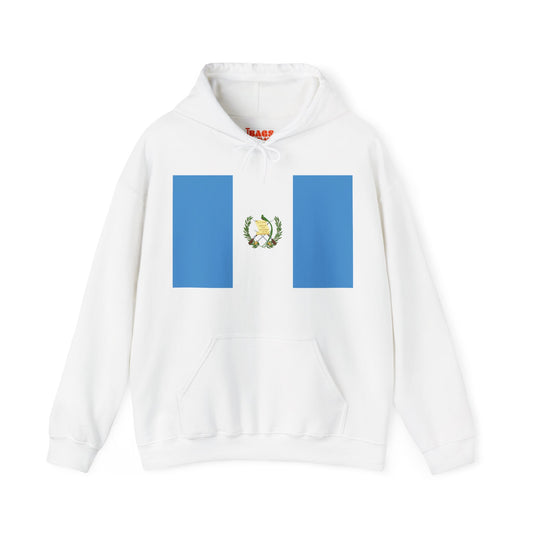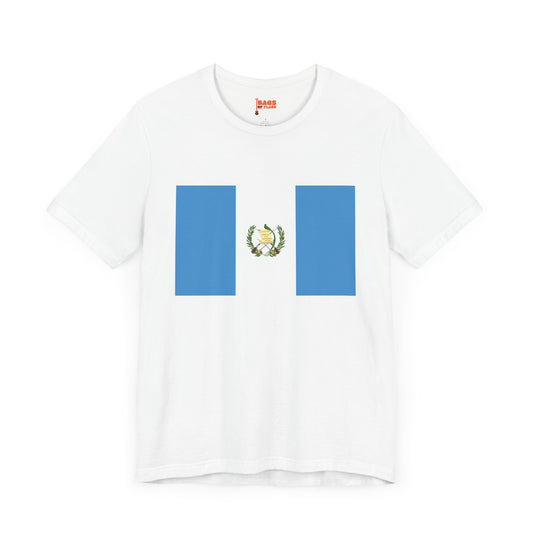-
Guatemala Pillow
Regular price $22.65 USDRegular priceUnit price / per -
Guatemala Backpack
Regular price $59.79 USDRegular priceUnit price / per -
Guatemala Leather Patch Hat
Regular price $18.85 USDRegular priceUnit price / per -
Guatemala Sweatshirt
Regular price $34.15 USDRegular priceUnit price / per -
Guatemala Flag Sweatshirt
Regular price $34.15 USDRegular priceUnit price / per -
Guatemala Mug
Regular price $8.65 USDRegular priceUnit price / per -
Guatemala Trucker Cap
Regular price $14.90 USDRegular priceUnit price / per -
Guatemala Hoodie
Regular price $34.40 USDRegular priceUnit price / per -
Guatemala T-shirts
Regular price $22.79 USDRegular priceUnit price / per -
Guatemala Flag on Hoodie
Regular price $34.40 USDRegular priceUnit price / per -
Guatemala Flag on T-shirt
Regular price $22.79 USDRegular priceUnit price / per
Collection: Guatemala
The Guatemalan flag symbolizes national pride and identity for the people of Guatemala. With its vibrant colors and unique design, the flag represents this Central American country's rich history and culture. We will explore the design, historical context, symbolism, current relevance, and additional facts about the Guatemalan flag.
Overview of the Guatemala Flag

The national flag of Guatemala features a striking design with two sky-blue stripes on its flanks and a white stripe occupying the center. This tricolor scheme is not merely aesthetic but deeply symbolic, encapsulating the nation's geographical and cultural essence. Sky blue, a color that evokes the vastness of the sky and the ocean's depth, pays homage to Guatemala's unique position between two significant bodies of water: the Pacific Ocean to the west and the Atlantic Ocean to the east.
The central white stripe is a testament to the values of peace and purity underpinning Guatemalan society. At the heart of the white stripe lies the national coat of arms, an emblem rich with historical significance and patriotic pride. This emblem provides a visual narrative of Guatemala's journey towards sovereignty and democratic ideals. This harmonious blend of colors and symbols seamlessly unites to form a flag and a declaration of Guatemala's enduring spirit and resilience.
Historical Context of the Guatemala Flag

The evolution of the Guatemalan flag is deeply interwoven with the nation's history. After independence from Spain in 1821, Guatemala underwent several political changes, each influencing the flag's design. Initially part of the Federal Republic of Central America, Guatemala, and other Central American provinces shared a standard flag. It wasn't until 1858 that Guatemala adopted its distinctive flag, marking a pivotal moment in its assertion of national identity.
This early version, however, differed from today's flag, featuring horizontal stripes and a different version of the coat of arms. The shift to the current flag design in 1871, under President Miguel García Granados, was symbolic of a new era in Guatemalan politics and society, emphasizing liberal reforms and a new democratic vision. This change not only solidified Guatemala's sovereignty but also reflected its desire to distinguish itself from its Central American neighbors, fostering a unique national pride that has endured to the present day.
Symbolism of the Guatemala Flag
The national coat of arms is at the heart of the Guatemalan flag's symbolism, an emblem layered with meaning and historical significance. This central feature encompasses a rich tapestry of symbols, each narrating a distinct aspect of Guatemala's heritage and values. The parchment scroll, prominently displayed, bears the date September 15, 1821, commemorating Central America's independence from Spanish rule, a cornerstone event in the region's shared history. Flanking the scroll are crossed rifles, signifying Guatemala's readiness to defend its sovereignty and the importance of maintaining a vigilant stance against threats to its freedom. The bay laurel crown, encircling the rifles, symbolizes victory and the nation's triumph over colonial domination.
Additionally, the crossed swords represent the honor and bravery of the Guatemalan people, further emphasizing the nation's martial courage in the face of external challenges. These symbols underscore Guatemala's enduring commitment to independence, defense of sovereignty, and the noble pursuit of peace through strength. The intricate design of the coat of arms serves not merely as an ornamental feature but as a profound statement of Guatemala's past struggles, present resilience, and aspirations for a future grounded in the ideals of liberty and democracy.
Current Relevance of the Guatemala Flag
In today's Guatemala, the national flag is highly significant, acting as a beacon of unity and patriotism. It waves prominently at various national events, including Independence Day celebrations, and is a fixture at military ceremonies, where it honors the service and sacrifice of the armed forces. In addition, the flag is a staple at official government functions, symbolizing the country's sovereignty and the governing principles that guide it.
The flag's presence extends beyond formal occasions, permeating daily life and public spaces. Schools nationwide raise the flag each morning, instilling a sense of national pride in the younger generation. Public buildings and institutions also display the flag, reinforcing its role as a national identity and continuity symbol.
Despite its widespread respect and reverence, the Guatemalan flag has been at the center of debates and controversies. Discussions often revolve around interpretations of its symbolism and the extent to which the flag's ideals are reflected in contemporary Guatemalan society. These debates highlight the flag's dynamic nature as a symbol that evolves with the nation's consciousness, mirroring its ongoing struggles, achievements, and aspirations. Through these discussions, the flag remains a focal point for national dialogue, reflecting the changing tides of Guatemalan society while standing as an enduring emblem of its people's hopes and dreams.
Additional Facts About the Guatemala Flag
In adherence to strict protocols, the Guatemala flag holds a position of deep respect within the nation. Protocols dictate that the flag must always be flown at the same height or higher than any other flag, ensuring its prominence and respect. Notably, the flag's unique design includes a different front and back; the coat of arms is proudly displayed on the front side only, distinguishing it from many other symmetrical national flags. This distinctive aspect underscores Guatemala's individuality on the global stage.
An interesting protocol involves the days the flag is flown across the country, with particular emphasis on September 15, Guatemala's Independence Day, highlighting the flag's integral role in national celebrations and remembrance. Moreover, the flag's colors - sky blue and white - are more than mere decoration. They are imbued with symbolism, reflecting the country's aspirations for peace and unity within its borders and in solidarity with its Central American neighbors. This rich tapestry of protocols, design details, and symbolic meanings contributes to the Guatemalan flag's standing as a potent emblem of the nation's sovereignty, values, and cultural heritage.










